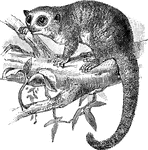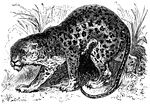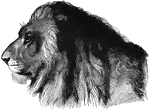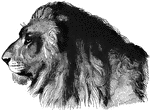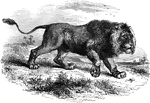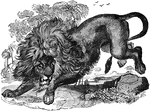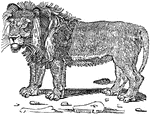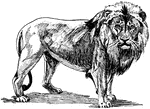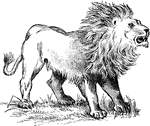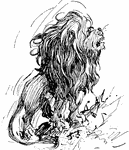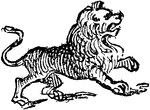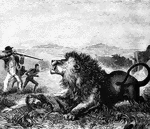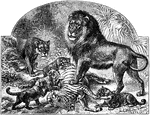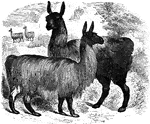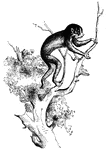The Mammals: I-L ClipArt gallery contains 111 illustrations of mammals starting with the letters "I," "J," "K," and "L" including: ibex, ichneumon, inghalla, jackal, jaguar, jerboa, kinkajou, kudu, lamb, langur, lemming, lemur, leopard, lion, llama, loris, and lynx.

Flying Lemur
"Genus Galeopithecus. - The animals of this genus resemble the lemurs and the bats, having the general…
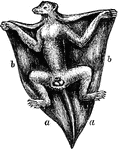
Flying Lemur
A gliding mammal that uses the flaps of extra skin between their legs to glide from higher to lower…

Red Lemur
"This lemur is noted for its brillant colorings, the greater part of the body being covered with a vivid…
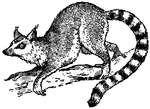
Ring-tailed Lemur
A familiar example of the true lemur, the Ring-Tailed Lemur (Lemur catta) , or 'Madagascar cat', is…
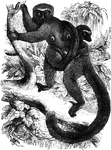
White-Fronted Lemurs
"Genus Maki: Lemur. The makis are the proper lemurs, and are distinguished by thick, soft fur,…

Leopard
The leopard has the power of climbing trees. This is what neither the lion nor the tiger is able to…
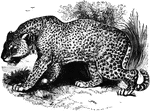
Leopard
"The Leopard, Felis leopardus, is about half the size of the tiger, being two feet high and…

Leopard
Leopards range in size from 1 to almost 2 metres long, and weigh between 30 and 70 kg. Most leopards…

Leopard
The leopard (Felis pardus) is a carnivore closely allied to the lion and the tiger, but differing it…
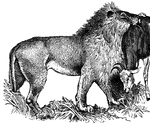
Lion
A lion when fully grown is nearly eleven feet long from nose to tip of tail and about four feet in height,…
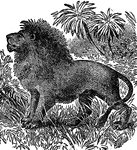
Lion
A magestic carnivorous animal, the largest of the cat genus. It is one of the most active of the large…
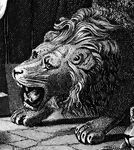
Head of Roaring Lion
Head of a roaring lion from an engraving of an angel shutting the mouths of the lions when Daniel was…
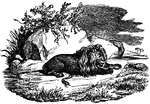
Recumbent Lion
Recumbent lion in front of a large rock is used as a tailpiece at the end of Mark's gospel in an old…
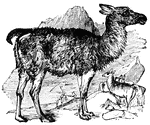
Llama
The llamas of S. America resemble the camel in form and structure. They have, however, no hump, and…
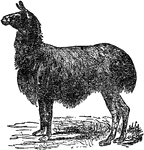
Llama
A ruminating quadruped closely allied to the camel, and native to the southern parts of Peru and other…

Lophiomys Imhausi
"This very extraordinary species from north-east Africa differs from all other rodents in the peculiar…
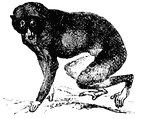
Loris
The loris is found in India. It is skillful in capturing birds, which it does in the night when they…

Loris
"Loris is a genus of Lemuridæ, with rounded heads and pointed snouts, slender bodies, very large…
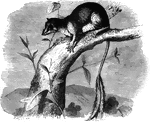
Ptilocerque Lowii
The only species of the Ptilocerque genus. "Has a very long tail, the first half naked, and the rest…
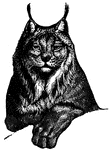
Lynx
The lynx is a timid animal of the cat family that lives primarily on small mammals and birds. It can…

Lynx
A genus of feline mammals, characterized by ears tufted at the tips, short tail, long fur, and comparatively…
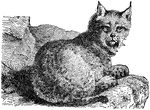
Lynx
A lynx is any of four medium-sized wild cats. All are members of the genus Lynx, but there is considerable…
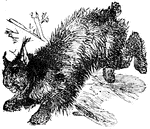
Canada Lynx
The Canada lynx is remarkable for its gait, going by successive leaps with the back arched. Its diet…
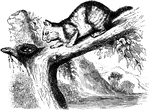
Canada Lynx
"The Canada Lynx of the Indians, has a round, broad head, large eyes, strong teeth, ears acute and tipped…

Leopard Seal
Leptonychotes weddelli. "A spotted seal of the southern and antarctic seas, belonging to the family…
